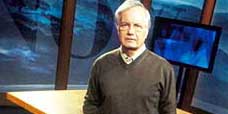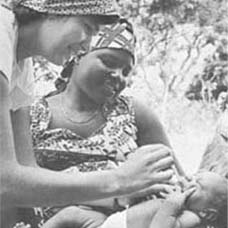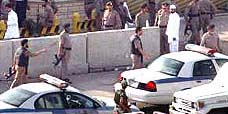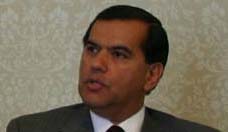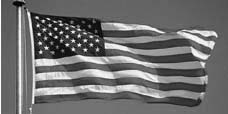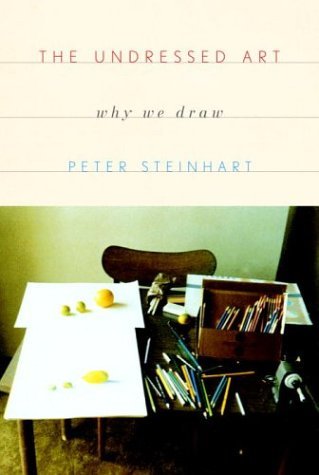
A conversation with Kenya RPCV Peter Steinhart about his book the Undressed Art
The Undressed Art
Why We Draw
Written by Peter Steinhart
Art - Drawing Hardcover
June 2004 $23.00 1-4000-4184-8
__###REPLACE###.name.verbose__
A Conversation with PETER STEINHART
Q: How would you describe your book and how did you come to write it?
A: This is a book about one kind of creativityódrawing. About one in ten of us draw, and that means that more of us are amateurs than professionals. For many of us itís an oddly obsessive activity. I know people who draw every day, not because they are professional artists, but because drawing is a way of dealing with the world, a way of looking considerately at things and finding out how you connect with them.
I didnít know that when I started writing this book. All I knew is that I had drawn since childhood and had not, as most people do, stopped drawing when I was ten or eleven. I drew cartoons for the high school paper and for a college humor magazine. I didnít take art courses in college because my family believed that might be a ticket to poverty. When I went off to Africa in the Peace Corps, I took thirty pounds of art supplies in my luggage, expecting to turn myself into an artist. That didnít happen. But I still drew sporadically. In my forties, I found I was spending all my time working or raising children and felt I needed something more meditative and private in my life, and I began drawing in a more serious way. I was traveling a lot as a writer and I spent a lot of time in airport waiting rooms. I was interested in character, and people in airport waiting rooms sit still, surrendered to your gaze. I filled sketchpads with drawings of other passengers. I joined a drawing group that met once a week, and that introduced me to other people who drew. I had never really thought about why I drew, but as I saw more and more people doing the same thing, I began to think about it.
I write most happily when Iím discovering things. Writing this book was a way of figuring out why one draws, and of thinking about creativity in general.
Q: Have you always been interested in drawing and when did you take it up?
Drawing is a way of thinking about things. We all draw some things when we think them out: who is going to sit where at the dinner party or how we are going to build a set of bookshelves. Some of us draw to think out more complicated things.
I drew as a child, then kept on drawing after the age at which most children stop. I was the only person in my family who drew, and I was also the only one with a strong interest in nature. I found birds fascinating, but no one much cared to talk about birds with me. The oldest drawings I have saved are of birds. I think one thing that kept me drawing was that it was a way of thinking about things I wasnít able to pursue in words. Other artists have had the same experience. John Ruskin was the only child of strict aristocratic parents who did not allow him toys or playmates. He went off as a child and sketched clouds and trees, and eventually became Englandís drawing master and in his writings shaped Victorian taste in both literature and art.
Q: Is there a link between your love of nature and your love of drawing?
A: Very much. The years I wasnít drawing much were the years I was living close to natureóor at least, I was out in nature a considerable portion of the time. I was on the road one week out of every four some years, going to fabulous places: East Africa, Colombia, Alaska. I spent a lot of time walking and camping in remote places in the American west. I was usually there to talk to people who lived there full time, and when I wasnít talking to them, I sought (as much as possible) the experience of living in a place where you are deeply connected to things, where time doesnít seem to run faster than you, and where your curiosity is encouraged, accepted and often rewarded. In nature, you look long and hard at things and you think about them. In the urban setting in which most of us live, you donít get much chance to do that; youíre compelled to keep moving, to avert your gaze, not stare at strangers, not pause, donít hold up the line, hurry up because the phone is about to ring. Drawing and natural history are both ways of seeing, of looking deep into things, of being unhurried, of finding ways to connect with things, of finding a sense of trust and comfort in the world.
Q: What do you think of Audubon?
A: I grew up with a copy of Audubonís Birds of America. I still admire him. He could draw. He could see. He could and did dramatize. I donít think of him as great in the same category as Goya or Matisse or Degas, but that is because he did birds and not humans. And human character and longing are far more difficult subjects to do well because even ordinary humans have very acute vision for human experience and gesture. Audubon could make mistakes, or make up things with birds and get away with it in ways that these other ďgreatĒ artists could not. But I identify with Audubon because he drew what he was deeply interested in, lived his enthusiasms, because he worked hard to put his eyes where they could do the most good, looked intently and patiently at the world and found wonderful things in it.
There were other bird painters who meant more to me. Louis Agassis Fuertes, Francis Lee Jacques, because they found such drama in birds and put them into evocative settings. And Roger Tory Peterson surely was an enormous influenceóhis simplified images of birds are still the catalogue I carry around in my mind.
When I was a child, film and camera lenses were a lot slower, and nobody was doing the kind of nature photography we see today. Printing technology was not able to provide the sharp detail and exact color you get in print today. Most of the illustrations in books and magazines were drawings and paintings, and I can still recall many of those images vividly today.
Q: Were there discoveries along the way for you about the nature of how we draw?
A: I think everybody who takes this up discovers certain things. For example, when youíre drawing, time seems irrelevant. It passes by so deeply in the background that it doesnít matter.
And that drawing is simplifying things. That realization delivers you from a lot of dithering when you draw. You find you donít need to see every detail to draw a good likeness. And sometimes when you forego detail, you get something more moving and meaningful. Your line stops being fussy and becomes inquisitive and expressive.
And that drawing is a way one gets to look deeply at other people. Nothing else lets you stare at people this way. In everyday life, courtesy requires you to make only sidelong glances at other people. In drawing, you can stare for hours. And this is why good models are really valuable. A good model is one who accepts your stare without feeling imposed upon by it. And that itself opens up a rare and strange relationship with other people, a kind of relationship you donít often have otherwise.
Q: Why do you think drawing went through a phase of being the step-child to painting and do you see a renaissance now in drawing?
A: Drawing has just about always been a step-child to painting. With few exceptions, drawing has been seen as something that leads to painting. Many Renaissance painters didnít bother to save their drawings. And today, you donít go to an art museum to see drawings, but to see paintings. Few museums display their drawing collections, in part because works on paper are damaged by light, and drawings are therefore fragile and ephemeral, but also because paintings are considered the real art. Color complicates drawing considerably. Drawing succeeds where it presents just enough of an object to make some sense of it. With painting, youíre assembling drawings of disparate objects and gathering them together in such a way as to make more complicated sense, and it is much more premeditated, much more difficult.
Drawing used to have important roles in portraiture and in recording historical events, and today we know what Napoleon or George Washington looked like because someone drew them from life and the drawing was saved in a lithograph or engraving. When photography came along it replaced drawing as the recorder of likeness and the keeper of historical fact. And as photographic and printing technology advanced, especially in the middle of the twentieth century, illustrators were increasingly pushed out of this field. Such developments pushed painting into realms the camera couldnít follow: Cubism, which had multiple points of view a camera couldnít imitate; Impressionism, which used color in ways photographers couldnít; Surrealism, which went into psychological realms that cameras couldnít follow.
As to whether there is a renaissance going on, I would say at least that we are emerging from a fifty year period in which abstraction was the reigning orthodoxy in fine art, and in which drawing from nature was discouraged. There are signs that artists are coming back to drawing: recent exhibits in England and America which focused on drawing as a part of the process in producing even the most abstract of images, even as a part of video art and installation art.
And at the level of amateurism, I think there is a considerable movement taking place. More and more people are taking up drawing as recreation. I see more books on how to draw being published. I think today one can go to practically any North American or European city and find a place where one can drop in and, for a small modelís fee, draw for a couple of hours. And these are people who are not drawing to make a living, but drawing to see, to get the sense of connection with things that drawing offers. And while drawing is draining out of our public schools as budget cuts cancel the art programs, it seems to be going ever stronger at community art centers and recreation departments.
Q: About how many drawing classes are there in the San Francisco Bay Area, and do you see this as an upward trend?
A: I canít speak really for the number of drawing classes, but there are eleven universities and colleges and three major art colleges in the Bay Area and all of them offer some kind of drawing courses. If you are an undergraduate at probably any college in the Bay Area, you can get drawing instruction. And what may be new about this is that you can take such courses even though you are not planning on majoring in Art. Stanford University, for example, offers a special course in drawing for non-art majors.
If thereís a trend, however, I suspect it is at local art leagues and cultural centers, where there is a steady stream of offerings of painting and drawing courses, nights, afternoons or weekends, aimed at people who simply want to broaden their lives. And if you look at the number of drawing groups in the Bay Area, that suggests thereís a great deal of energy pouring onto newsprint pads and sketchbooks. I found eighty-five groups I could draw with in the Bay Area. That doesnít count the private groups in peopleís homes or private studios that I couldnít get invited to, or the regular weekly or bi-weekly drawing sessions that go on in the many animation studios and computer game producing companies in the Bay Area. It is possible to draw every day of the week here, and to do that for a month without repeating groups. I think that is relatively new.
Q: Who are some of your favorite artists who draw?
A: Since I began drawing this seriously, I spend a lot more time visiting museums and galleries, and I experience them differently. Iím not an art historian, and I wouldnít want to pose as a connoisseur. If thereís an exhibit of Renaissance drawings somewhere, Iíll go out of my way to see it. In the museums, Degas and Toulouse Lautrec sometimes leave me breathless. So does Ingres. Matisseís flowing energetic lines always give me a sense of grace. Picasso may have been the greatest draftsman who ever lived, and if you look at his
early portraits you see he could report anything he drew accurately and then turn around and draw what he felt about that person spectacularly.
But thereís a lot of really excellent drawing everywhere. Some of it is in The Undressed Art. I keep finding people I really admire: Robert Schultz in Madison Wisconsin, Kent Bellows in New York City, Julie Schneider in Philadelphia, Fred Dalkey in Sacramento, all come to mind. Wayne Thiebaud can draw so beautifully it makes you just want to stop and stare.
There are cartoonists I just love to look at, too: Saul Steinberg and George Booth at The New Yorker. Gus Arriola, who drew Sunday Comics for the San Francisco Chronicle. Bill Watterson, who drew Calvin and Hobbes. Jack Davis, whose parodies at Mad Magazine made adolescence worth surviving, and whose ad copy still turns up occasionally today.
One of the lovely things about drawing is that it pulls you into a conversation with these people, makes them in some way your colleagues and acquaintances.
Q: You devote a lot of attention in this book to models. Why?
A: If you draw long enough, eventually you want to draw people. The human face and figure are the ultimate tests of whether one can draw well or not, because the human eye is so precisely calibrated to these subjects that small errors in drawings will make them seem amateurish. And we as artists have a stronger interest in these subjects, too, because we are so geared to looking at other people.
Most of drawing is learning to draw. It takes a lot of practice to find out what lines work for you, to get the sense of pressure to put on a drawing implement, to feel where the form goes on the paper, to find a sense of proportion, and so on. You have to look a lot of times to see simple things. So you need models to sit still for you.
You may succeed in getting your wife or boyfriend to pose for you. But you wonít get them to pose for very long. Modeling turns out to be hard work. Humans arenít made to sit still. We are made to be turning our heads constantly to see whatís going on around us or to flash expressions of our feelings at others. Our heads are heavy and outsized, and if we arenít moving them around, our necks get tired. Moreover, it can be tedious work sitting still while others around you are engaged feverishly in some activity. And on top of that, weíre not much flattered by the efforts of an untrained artist, so itís not as if weíre going to get much reward for sitting. So, itís more likely than not that the second or third time you ask your spouse or friend or child to sit for you, they find that thereís work to be done or a dog to be walked or an important television program that must be watched in the other room. So you need professional models.
A good model is not simply someone who sits around in their skin. A good model has to be aware of where he or she is in the room, how the light falls on them, how to remember exactly where they were over a break, so that they can go back into the same pose, exactly. A good model has to know what his or her body can do and canít do. Beginning models constantly get into poses they canít hold for five minutes, and when they do, they start to ache, and then to sweat and shake. Iíve heard models tell me how the pain was so great it made them sick. Itís hard work.
Most of all, a good model has to be very present. The best models seem to be people who feel comfortable with who they are. They donít have to be beautiful by conventional standards, to have a Hollywood-shaped body and even teeth and so on, and indeed, in my experience, people who seem conventionally handsome or beautiful are often so self- conscious about it that theyíre not very interesting to draw. Normally, what a good model shares is a feeling or a sense of character, a dignity, a grace, a whimsy, because ideally it is that, and not just the body, the artist wants to draw. So, you have to be very available. Most of us are simply too self-conscious to be that available.
At its best, artist and model are engaged in a kind of compassion, a sharing of feeling. And it takes a special kind of person to make that happen.
